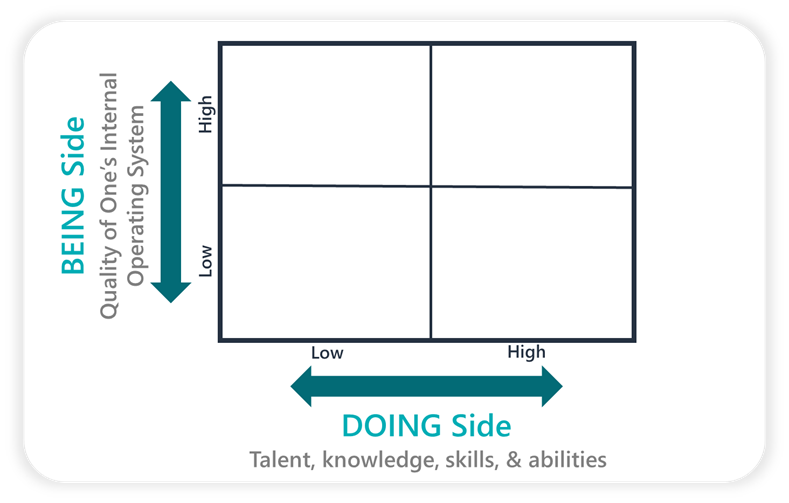The New York Jets have long been an organization defined by frustration and underperformance. While their passionate fan base remains hopeful each season, the results on the field consistently fall short of expectations. Despite some promising moments, the team has failed to establish itself as a perennial contender. This is especially true in recent years, where costly personnel decisions, inconsistent coaching, and an apparent lack of cohesive leadership have hindered progress.
In a recent ESPN article, Jets owner Woody Johnson made an intriguing admission. He said, “I have to be a better owner.” he recognizes that he needs to be better and is committed to working toward improvement. This self-awareness is a step in the right direction, but it raises two critical questions:
- Does Woody Johnson actually know how to become better?
- What would I recommend for him to truly become a better owner and leader?
The Common Pitfall: Wanting to Improve Without Knowing How
Through my work with organizations and leaders, I’ve found that most people genuinely want to improve. However, a startling reality is that most people don’t actually know how to do so in a meaningful or significant way. The type of growth that Woody Johnson is referring to and needs isn’t just about improving his knowledge or tweaking surface-level behaviors. If he really wants to “be a better owner,” he is going to have to upgrade his internal operating system, which is represented as his “Being Side” in the figure below.

Stated differently, what I have learned is that when most leaders say they will become better and try to become better, they focus solely on their Doing Side. But, this focus can only be incrementally helpful at best. If leaders want to transformationally elevate their effectiveness as leaders, they have to focus on their Being Side.
But what does that entail?
Let me present what I would tell Woody Johnson if I had the opportunity to help him. And, it is my guess what is about to follow is not even on his radar (although I hope it is).
What Woody Johnson Needs to Know & Do to Become a Better Owner
In my experience learning about and helping leaders become transformationally better, I have found that this process can largely be boiled down to three steps.
1. Gain Awareness of What to Focus on to Become Better
Before any meaningful growth can occur, Johnson must recognize that improvement isn’t just about making better hiring decisions or adjusting short-term strategies. Instead, it’s about elevating his leadership from within. This requires understanding two fundamental concepts:
- He has a Being Side (his internal operating system). Just like a computer’s software determines how well it functions, a leader’s Being Side shapes how they process information, make decisions, and interact with others.
- His altitude along his Being Side dictates the sophistication of his leadership and sets the ceiling for the entire organization. If Johnson’s internal development is limited, it will inherently limit the Jets’ ability to reach new heights. The struggles of both Johnson and the team over the last decade suggest that his Being Side may not yet be at the level necessary to drive the success he and his team desire.
2. Evaluate Being Side Altitude
To set a plan for doing the work of becoming better, Johnson must assess his current level of development. Several frameworks can help him gain clarity:
- Vertical Development Altitude: Does he primarily operate at the Mind 1.0 (self-protection), Mind 2.0 (success and achievement), or Mind 3.0 (contribution and transformation) level? Here is a link for a FREE Vertical Development Assessment to gauge your vertical development altitude.
- Mindset Quality: Are his mindsets wired for self-protection (fixed, closed, prevention, inward) or value creation (growth, open, promotion, outward)? Here is a link for a FREE Personal Mindset Assessment to gauge the quality of your mindsets.
- Complexity of Being: Leaders who elevate their Being Side become more complex in their cognitive, emotional, behavioral, and moral processing. In Woody Johnson’s case, we would want to explore how complex he is in these different areas to see if there is a particular area in need of expanding?
- The Width of His Window of Tolerance: Leaders are at their best when they operate within their window of tolerance—the psychological and emotional space where they can effectively manage stress and decision-making. If Johnson’s window is narrow, he (1) may frequently lead from a place of emotional reactivity rather than strategic clarity and (2) will need to widen his window of tolerance to operate at his very best.
3. Develop a Specific Plan to Upgrade His Internal Operating System
Once Johnson has an honest assessment of where he stands, he must take targeted action to enhance his leadership capacity. True transformation requires deliberate effort in several key areas:
- Upgrading His Mindsets: Shifting from self-protective to value-creating mindsets will enable him to lead with greater vision and effectiveness.
- Overcoming Fears and Mental Blocks: Self-protective fears and mental blocks commonly hold leaders back. Leading from an elevated plane first requires addressing internal fears and breaking through limiting beliefs.
- Expanding His Window of Tolerance: Learning to regulate emotions and maintain composure in high-pressure situations will enhance his ability to lead effectively.
- Increasing Complexity: Engaging in practices that challenge his cognitive and emotional sophistication—such as seeking diverse perspectives, investing in deep learning, and reflecting on past decisions—will enable him to handle the complexity of running an NFL franchise more effectively.
The Path Forward for Woody Johnson and the Jets
If Woody Johnson is serious about becoming a better owner, he must recognize that the key to transformation isn’t just about making better external decisions—it’s about upgrading his internal foundation. His ability to lead the Jets to success will ultimately be determined by his capacity to develop vertically, embrace new mindsets, and elevate his leadership sophistication.
The question now is: Will he truly commit to this level of transformation? Because if he does, he won’t just become a better owner—he’ll create the conditions necessary for the entire Jets organization to thrive.










